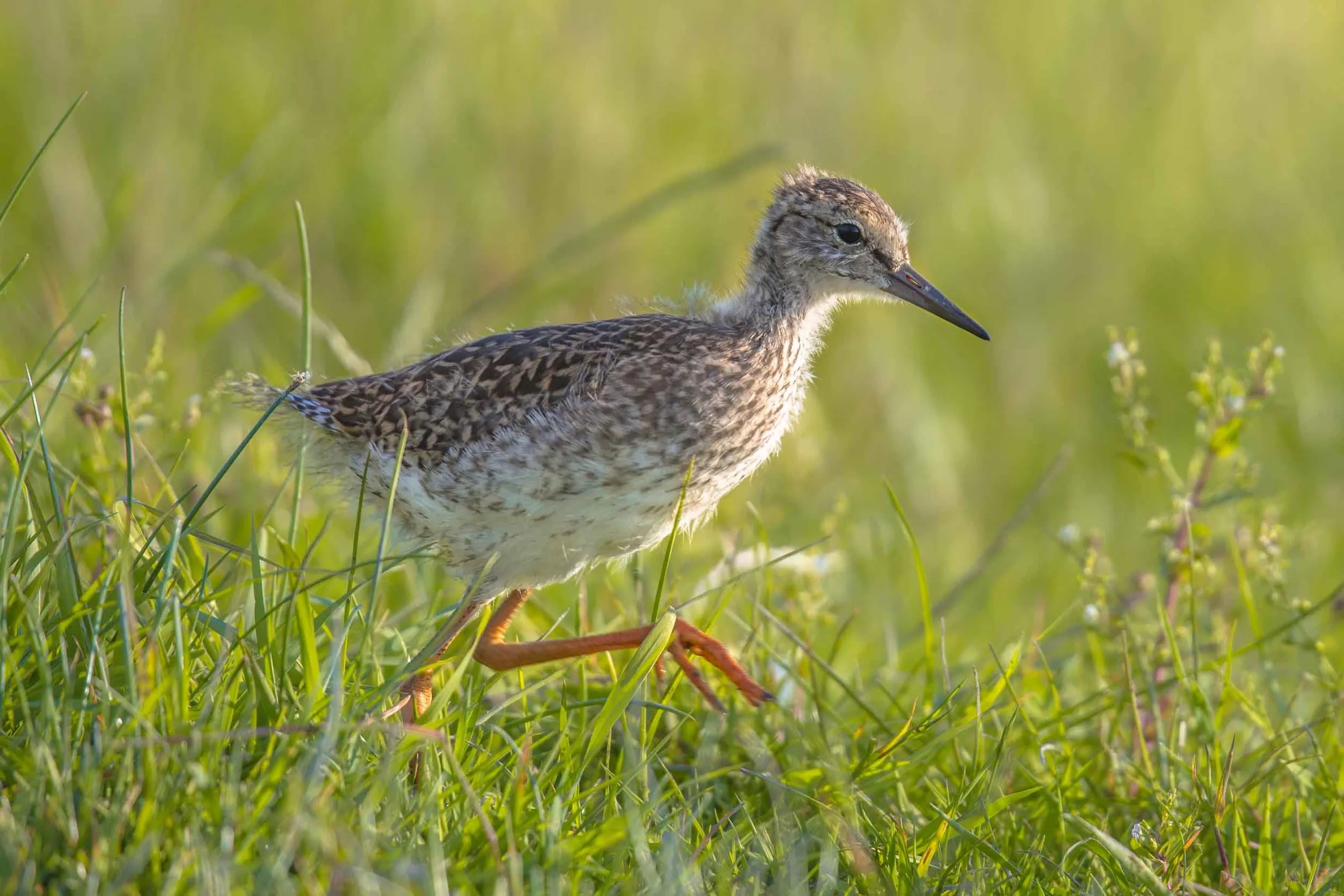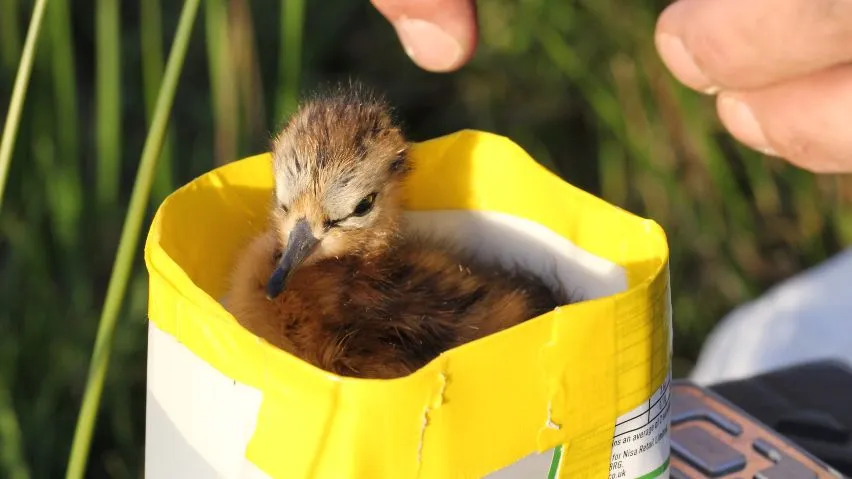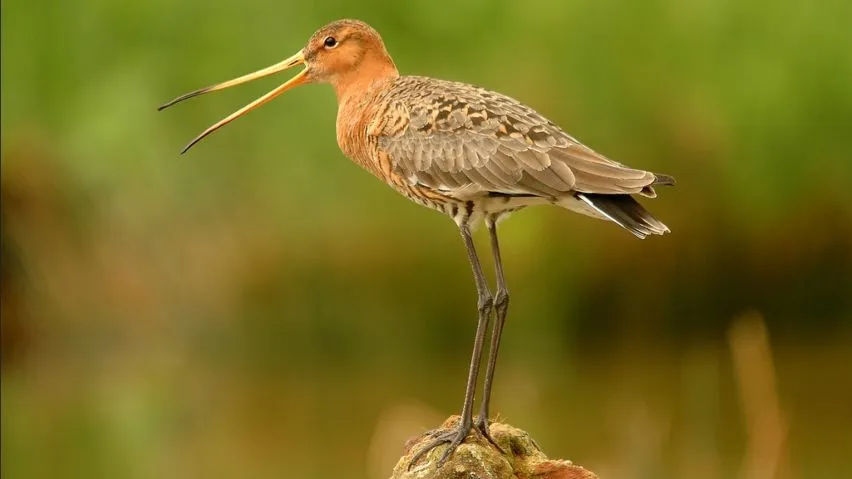Give Godwits a headstart
To save nature, sometimes you need to experiment. In 2017 a team of nature savers began a ground-breaking project of hand-rearing chicks to then release back into the wild. The aim was to boost the numbers of one of our rarest breeding birds, which had already gone extinct in the UK once. The team’s mission was to try and make sure history didn’t repeat itself.

On this page
Glorious Godwits
The bird in question is the Black-tailed Godwit, a bird the RSPB’s Rebecca Lee has a soft spot for. She said: “To me they’re the bird of the Fens. They represent those wide-open watery landscapes and with their really long legs and particularly long bill, they’re one of our most charismatic waders.”
Black-tailed Godwits went extinct as a breeding bird in the UK in the 19th century when there was large-scale drainage of the wetlands in the Fens. Around 100 years ago they slowly began to return but their numbers have remained critically low ever since.
Today, three nature reserves in the Fens – RSPB Nene Washes, RSPB Ouse Washes and WWT Welney – are home to over 90% of the UK breeding population.
Hatching a plan
Rebecca is the senior project manager at Project Godwit, a partnership between the RSPB and the Wildfowl & Wetlands Trust (WWT). She has been involved since it was set up in 2017 to help boost Black-tailed Godwit numbers. Part of the plan included a first for the UK - headstarting. This is where you take eggs from a nest (under licence from Natural England), and then raise the newly hatched chicks until they’re old enough to fend for themselves and can be released back into the wild.

How do you headstart a Godwit?
The team drew on WWT’s extensive experience of hatching, rearing and releasing birds, including a similar project for Spoon-billed Sandpipers in Russia. Project Godwit allowed them to put this experience to the test for Godwits in the UK. After careful planning and securing licenses from Natural England, the process goes like this:
Stage one:
The eggs are carefully collected by the team and put in incubators. Black-tailed Godwits normally lay around four eggs, and if the team manage to take them early enough, the pair will mate again and try to raise another brood.
Stage two:
The eggs are checked every few hours by the team to ensure that they are at the correct temperature and humidity. They hatch after 22– 24 days.
Stage three:
Once hatched, the chicks are kept inside for up to six days and fed nutrient-rich pellets.
Stage four:
The chicks are then moved outside, but still given heat lamps, shelter and food.
Stage five:
The chicks gradually become used to foraging for bugs as they do in the wild.
Stage six:
At three weeks old the chicks are taken into a release aviary on land very much like they would live on in the wild. They no longer need heat lamps or shelter but are still protected from predators, such as foxes and badgers, and given a small amount of supplementary food.
Stage seven:
Between 28 and 32 days old, after health checks and ringing, the chicks are released to start their new lives. The chicks are monitored daily until they depart on migration to Africa.

What’s in a name?
As well as providing protection, food and shelter, the team decided to name each chick as a way of building affection for the young birds with the local community and people further afield. Rebecca said: “By giving each of them a name, it helps build a connection and makes them seem that bit more real. It felt like a little bit of a no-brainer to name these incredibly rare fluffy chicks, to help us tell their stories a bit easier."
The team have named the chicks in different ways for each year of the project. Some were suggestions on social media, some are named after places nearby and last year local schools got the naming honours.
But how does the team explain Chip, Rosti and Wedge? Rebecca said: “In 2018, there was a flood on the Nene Washes which meant the birds that came back had to nest in nearby arable fields that were wet and muddy. Many of the eggs were stuck in the mud and all were being incubated in conditions that meant none of them would’ve survived. When the team collected them, they named them after potatoes, because that’s what they looked like – they were literally covered in mud. So it seemed to make sense to name a selection of these birds after potatoes.”

Number boost
After six years, the team has shown that headstarting can successfully increase Black-tailed Godwit numbers. Rebecca said: “Headstarting has definitely worked in this situation. Because it hadn’t been done before for godwits, when we started, we couldn’t be sure how many birds would survive and return to breed.
“We’ve been delighted to find out that the headstarted birds seem to be doing just as well as birds raised in the wild. They are surviving, migrating and returning to breed at the project sites, boosting the size of the breeding population.”
She added: “The project has also demonstrated the power of working together to save nature. Bringing together our skills with those of WWT has really made a difference for this incredible species.”
The stats
- Over the five years of headstarting the team has released 206 birds.
- If those eggs had been left in the wild, only a small number would have gone on to hatch and survive long enough to fledge.
- At the Ouse Washes, numbers have jumped from three to 18 pairs.
- At the Nene Washes, a small amount of headstarting has managed to prevent further decline.
- Now, more than 50% of the pairs of black-tailed godwits at both sites include at least one headstarted bird.
The fight continues
Although this part of Project Godwit has been successful, there is still lots of work to be done to ensure Black-tailed Godwits continue to breed in the UK.
Habitat loss means that there are very few suitable places for them to breed here and where they do, predators often take too many of the eggs and chicks.
Rebecca said: “It’s not possible to feel positive yet about the future for Black-tailed Godwits because predation continues to be a big problem for them and their breeding success in the wild is too low for numbers to increase.
“But there is no doubt that headstarting has worked and, together with habitat management and new habitat creation, has given the populations at the Ouse and Nene Washes a real fighting chance.”
The success of headstarting as a conservation tool has also opened up new discussions about how it could be used for other endangered birds in the UK.
Project Godwit is a partnership between the RSPB and WWT with major funding from the EU LIFE Nature Programme, the HSBC 150th Anniversary Fund, Natural England, the National Lottery Heritage Fund through the Back from the Brink programme, Leica and the Montague-Panton Animal Welfare Trust.